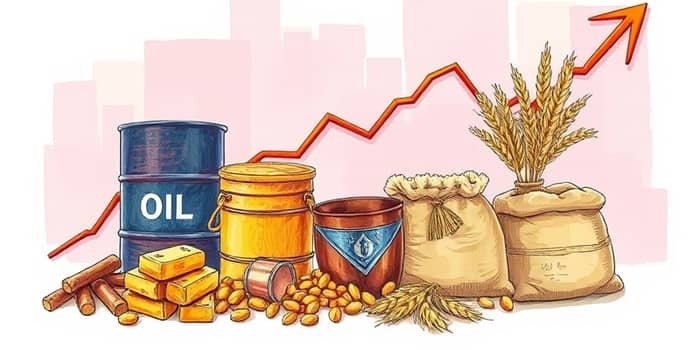
The global commodity complex has experienced a notable reversal after a period of unprecedented volatility. Markets that surged on supply shocks and geopolitical tensions are now retracing, prompting investors and policymakers to reassess strategies. Understanding this retreat is crucial for navigating the shifting landscape of energy, metals, and agriculture.
The year 2025 has seen a sharp decline in prices across sectors, with commodity indices projected to fall by nearly 12%. This trend extends into 2026, where a further 5% drop is expected, placing many commodities at their lowest levels in six years.
Between 2020 and 2024, the commodity market was buffeted by a series of shocks—pandemic disruptions, fractured supply chains, and soaring inflation. These factors drove both price spikes and severe swings. Now, the reversal is fueled by a combination of easing tensions, recovering supply, and weakening demand.
Multiple forces have converged to pressure prices downward:
Each catalyst interacts with the others, creating a complex web of influences. For instance, as oil supplies recover, even moderate demand depresses prices further.
Different commodities have reacted uniquely to the broader downturn. The following table summarizes key movements in 2025 and the drivers behind them.
Oil markets led the retreat. The removal of the Middle Eastern risk premium triggered immediate sell-offs. Yet, inventories—though rebuilding—remain below long-term averages. OPEC+ decisions on production cuts will be a focal point for future stability.
Supply chain imbalances are gradually easing, but any geopolitical flare-up could reintroduce volatility. Investors should monitor global demand signals and policy statements from major producers closely.
Base metals have largely felt downward pressure due to a global economic slowdown reducing industrial activity. Copper remains relatively resilient thanks to its role in energy transition technologies. However, steel and aluminum face weak construction demand, particularly in China and Turkey.
Policy measures—such as tariffs or infrastructure spending—could provide localized relief. Market participants should track government announcements, especially in emerging economies aiming to stimulate growth through public works.
Agricultural markets are more stable, anchored by government reference prices for key grains. Wheat at $6.35 per bushel and corn at $4.10 provide predictability for producers and consumers alike. Soybeans near $10 reflect balanced supply-demand dynamics.
Soft commodities like cocoa have seen higher prices due to weather-related yield issues. Persistent supply shocks in West Africa keep the cocoa market tight, while coffee markets enjoy modest oversupply. Biofuel-linked demand also supports corn and sugar prices.
The retreat in commodity prices carries broad macroeconomic significance:
Commodities remain a barometer for global economic health. Further slowdown or policy missteps could accelerate downward trends, while any resurgence in growth or fresh supply disruptions may reverse the slide.
Producers and investors should consider:
End-users in manufacturing and agriculture can benefit from lower input costs for budgeting but should remain vigilant for sudden price reversals driven by geopolitical upheaval or supply chain incidents.
As 2025 progresses, the interplay between slowing demand, recovering supply, and policy interventions will define commodity trajectories. Market watchers will closely examine:
Although prices have fallen from recent peaks, the potential for renewed volatility remains. Stakeholders armed with robust strategies and timely information will be best positioned to navigate this dynamic environment.
The retreat in commodity prices marks a transition from crisis-driven highs to a more balanced market phase. While the current slide offers relief to some, it also underscores the ever-present risks in a globally interconnected supply chain. Remaining informed and adaptable will be the keys to success in the coming months.
References













